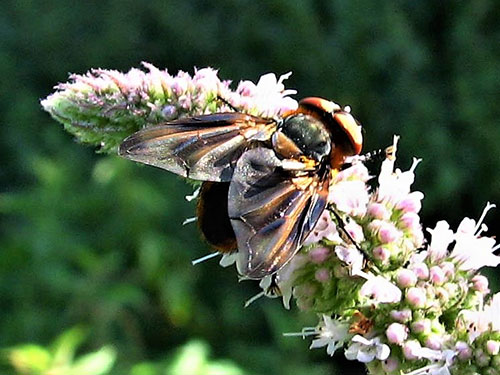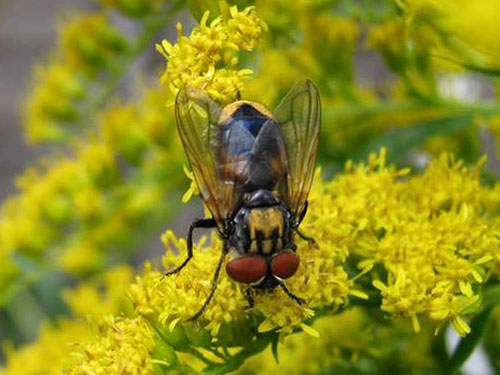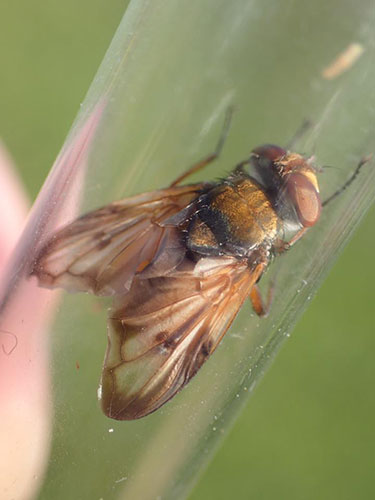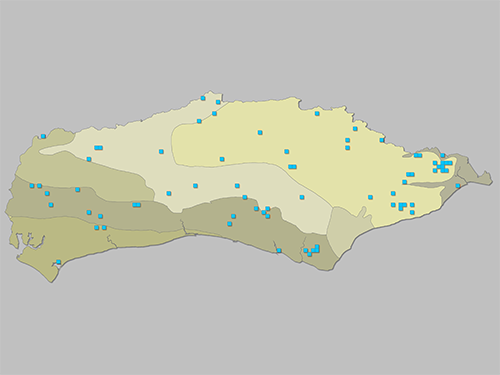


Phasia hemiptera
Photo: Patrick Roper

Phasia aurigera near Chichester on
20 September 2019
Photo: Andrew Thrasher

Ectophasia crassipennis, Brighton, 2019
Photo: Graeme Lyons

Map showing scattered but widespread distribution of Phasia hemiptera records in Sussex
Source: SxBRC
In their early stages these flies are endoparasitoids1 of shieldbugs (Pentatomidae), the only formally known hosts being the Green Shieldbug, Palomena prasina, the Forest Bug, Pentatoma rufipes, and the non-British Pentatoma metallica, all in the order Hemiptera although these hosts would not have been known to J. C. Fabricius when he gave P. hemiptera its specific name in 1794. Interestingly there is old Sussex record of the species (then Allophora hemiptera) in the 1905 Victoria County History which notes that a keen wildlife recorder from Bognor, H.L.F. Guermonprez, bred the fly from (presumably the larva or pupa) of a Lackey moth Malacosoma neustria from Felpham. Claude Dupuis, a leading French expert on P. hemiptera and other members the tribe Phasiini, dismissed this, however, as incroyable.
Because of the size of the flies, particularly the males, it is remarkable that there is enough nourishment, and indeed room, inside the host bugs to provide for the quite large larvae of the parasitoid. It has been recorded though that the bugs increase their normal volume after parasitisation indicating that Phasia larvae may alter the metabolism of their hosts in some way.
P. hemiptera adults are often seen in gardens, as well as in the wider countryside, on umbels of hogweed and mint flowers and the species is widely distributed in the British Isles (distribution of records in Sussex can be seen in the map). The Tachinid Recording Scheme has, however, pointed out that P. hemiptera has two lookalikes in the shape of Phasia aurigera and Ectophasia crassipennis (both of which were recorded for the first time in the UK and Sussex in 2019, P. aurigera near Chichester in West Sussex and E. crassipennis at Pett and in Brighton). P. hemiptera can be distinguished from these by the tufts of ginger hair on the sides of the thorax just behind the head.
Please record any sightings of Phasia hemiptera and other Tachinids on the iRecord website.
Patrick Roper, 16th May 2020
1 A parasite that lives inside another animal and ultimately kills it.
Every month it is our aim to highlight a species that is “in-season” and, although not necessarily rare or difficult to identify, has been highlighted by our local recording groups as being somewhat under-recorded and for which new records would therefore be welcomed.
If you or your recording group are aware of species such as this then please contact Bob Foreman.